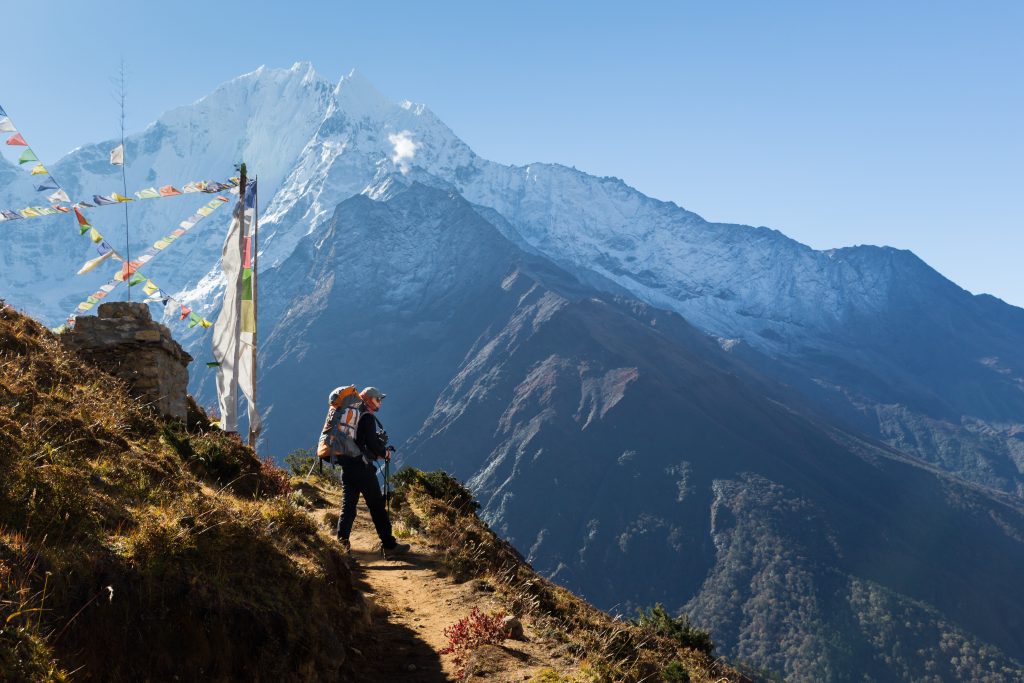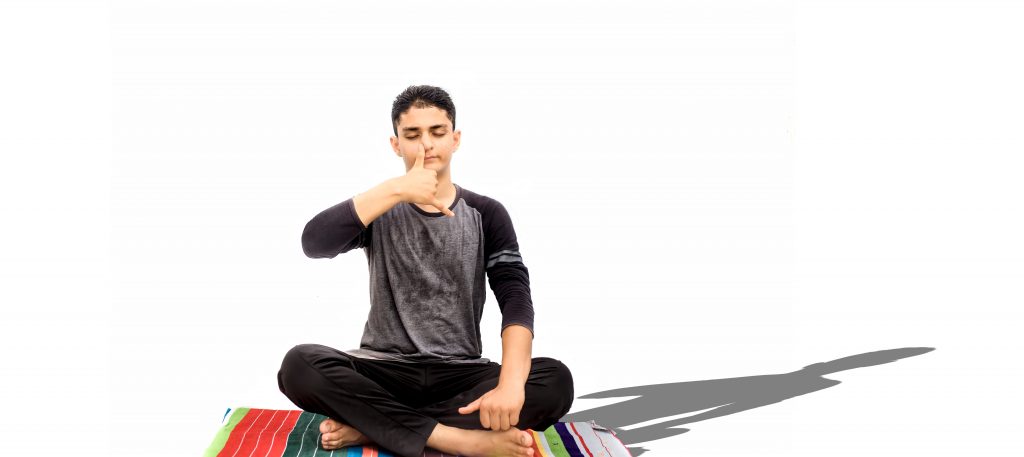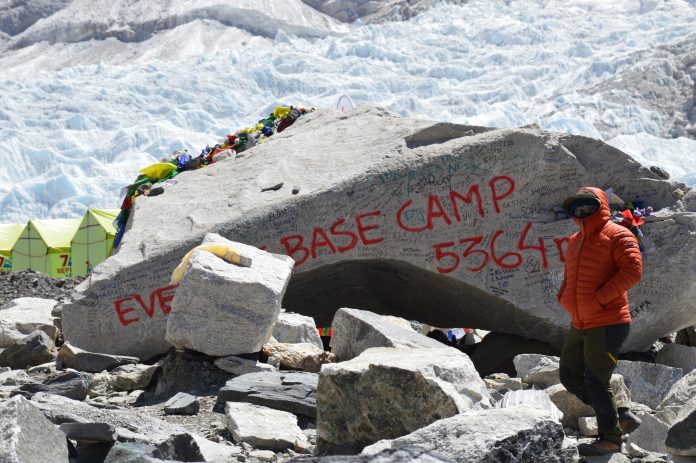The very fact that trekking to Everest’s base camp speaks volumes about the need for preparation. EBC Himalayan trek Trek is moderately difficult, with roughly 40,000 people trekking to EBC every year. With such a huge population trekking to EBC every year, it is a given that the trek is incredibly popular. However, one cannot underestimate the challenging nature of this trek. This is why your fitness and your form are vital to do this trek.
A trek to EBC is more about sustenance and endurance, mental and physical strength spread over a period of 12 days. The total trekking distance is around 150+ kms. The trek has steep inclines and long hikes. The trekkers gain significant altitude during the trek (from 2,600+ metres to around 5,324 metres). And while two days will be given for acclimatisation, the high altitudes may make you slightly uncomfortable. Having said that, dedicating maybe an hour or an hour and a half every day towards a fitness regime will help you prepare for the trek.
So the next time you need some motivation to work out, here are some picture-perfect images from the trail that will help you:

So, let us dive right in and look at some sureshot ways following which you’ll be 100% ready for undertaking the EBC trek with TrekNomads!
Understand why you need specific training and not a generic one for the EBC Trek
You will be treading up and down on mountains clad with snow, with roughly 6-12kg of weight on your shoulders. You must train to build your endurance and, of course- stronger legs, core and lungs.
- Let us assume that you work out 4 to 5 days a week; make sure you have a leg day twice in a week!
- You should also start going for smaller 3 to 6-hour treks with elevations up and down. In addition to this, start biking, swimming, and yes- lift weights too.
- We have realised that climbing up and down the stairs offers a great core strengthening for people, especially when they train for trekking.
- Gradually carry weights as you climb the stairs to increase endurance and strength.
Train for the Descent too!
This is something that we have seen happen a lot. People train so well for the climb but believe us; the descending is equally difficult. You may think the descent is the natural course. However, with snow, loose gravel, rocks, mud and boulders around, it can become quite tough. Thus, you need to control your steps and speed, which is why we emphasise on- “DO NOT forget leg days.” You can train specifically for stability and core balance.
Lunges and weight training can help you strengthen your knees and ankles for any steep descent. Single leg squats and calf raises are also known to work for many, so you can also try them.
P.S: We recommend you check with your doctor and gym instructor before undertaking any fitness regime.
Work on your Breathing
Ever heard of abdominal breathing? The breathing where most of the stress is on your abdomen. It’s only normal breathing, just that your abdomen is made to contract and expand significantly. Abdominal breathing results in a stronger diaphragm and improves blood oxygenation. High altitude trekkers are known to practice abdominal breathing for this very reason.
Abdominal breathing is not the usual breathing process, but if you practise it for about 10-15 minutes every day, it will soon become easy to do. Practising ‘pryanayam’ will help you breathing in your full lung capacity.

Here are the steps that you can try:
- Put one hand on your chest and the other on your abdomen
- When you breathe in through your nose, make efforts to make your tummy expand
- Hold it like that for a while
- Then gradually, as you exhale, make efforts to make your tummy contract
- Continue for five more rounds and try to hold your breath as much as you can
Get your Nutrition Right
Let us divide this section into two parts. One would be getting the right nutrition prior to the trek, and the second would be on the trek. Now, we know that this blog is specifically for the “training for the trek” bit, but if we don’t talk about the “on trek nutrition,” the entire effort would go to waste.

So, here we go:
The Pre-Trek Diet
- Have a balanced diet with balanced micronutrients and adequate amounts of Proteins, Carbs, Fats and fibres
- Add plenty of fibres through fruits and vegetables, nuts, and legumes
- Drink a lot of water – at least 3-4 litres per day
- Avoid eating at late night as that may result in fat accumulation
- Avoid alcohol & Cigarettes
- Avoid fried and oily food
The During-Trek Diet
An average trekker to EBC himalayan trek is known to spend significant calories during the trek. This means that the usual diet for the treks won’t work for you. Avoid eating raw/semi-cooked legumes. Instead, go for boiled or mashed potatoes, lots of vegetables, fruits, soy chunks, some vitamin supplements, and a bit of fat. The optimal proportion of carbohydrates, fat, and proteins in your diet on the day of your trek should be 4:1:1.
The EBC himalayan trek route offers a great variety of food during the trek. Some of our favourites are Daal Baath, Sherpa Stew, Garlic Soup, Soupy noodles, Thupka. Try these out during the trek, as these are not just filling, but healthy and nutritious.
In the route, you will also get pizzas, pastas, non-veg food and other calorie dense and processed foods. Avoid them at all costs. These foods are harder to digest at high altitudes and may create significant discomfort to you.
Also, make sure you pack some food for the trek. You may feel hungry anytime and wouldn’t want to experience a loss of energy there. Never think that you’ll not feel hungry again because you had a heavy breakfast. Mark our words- you will!
Stretch it Out – Daily.
We are assuming that by the time you reached this point, you would have been convinced that working out would be required. So, here is one more thing we want you to practice – stretching your body on a daily basis.
There is no need to go for specific yoga asanas or stretching exercises. Instead, just make sure that you stretch your body as you go about your normal routine. For instance, if you are working, just stretch your neck, arms, and legs every couple hours. Even when you are working out, break into a stretch to relax your body. This way, your body will get used to relaxing upon being stretched gently. This would go a long way when you want to stretch and relax on the trek.

Be Consistent and Start Early
The EBC himalayan trek trek tests endurance and stamina. Hence, your training will have to reflect the same. Training a month prior to the trek will lead to quick fatigue during the trek and exhaustion and may cause AMS (Acute Mountain Sickness).
You need to understand that stamina and consistency, just like Rome, cannot be built in a day. Ideally, a prep of 3 to 4 months is required.
Lastly, but most importantly, always choose trek groups/companies who have good experience trekking the said region (like TrekNomads). The Everest Base Camp comes with its own set of challenges. It is like a beautiful mathematical equation- one variable is wrong, and the entire experience can be jeopardised. Hence, you must choose the right trekking partner.
To know more about upcoming EBC batches, visit here!
A good trek group will:
- Know the trail, the locals in and out: This is crucial because treks such as EBC tend to have uncertainties with respect to weather conditions, delays in domestic flights etc. A group that has a strong on-ground presence will also make sure to handle these uncertainties with ease.
- Help you prepare for the Himalayan trek: It is important that your trek group follows up on how you’re training, and help you prepare for the trek mentally and physically especially for a trek like Everest Base Camp. At TrekNomads, we ensure that to help our trekkers with a fitness regime based on their current fitness level and other criteria, we also regularly monitor and follow up on their fitness regime every fortnight. This helps us ensure that they are on track with their regime. We also hold regular meets to help trekkers with queries and engage them with conversations with former EBC trekkers to help them prepare mentally.
- Will help you all through the way: When choosing a trek group, don’t forget to read reviews. This will help you understand how they face uncertainties and treat their trekkers on the trail. This is important because for long daunting treks like EBC, the last thing you need is to be left alone to catch up to the group. We at TrekNomads follow a simple rule of – “No trekker will be left behind”. This basically means that we will always have either a trek guide or a trek lead leading or sweeping you all through the way ensuring you reach the Everest Base Camp and back with ease. However, we also believe that the proof of the pudding lies in eating. Hence, listen to what some of our fellow EBC trekkers had to say about us.
Feel like EBC Trek may be for you?

[…] EBC himalayan trek is more about sustenance and endurance, mental and physical strength spread over a period of 12 days. […]
[…] Make sure you are fit to undertake this trek – check out our blog on how to be fit for EBC […]
[…] you can check our blog for […]